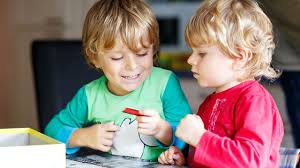Potty training can be a significant challenge for children with autism, often requiring more than the conventional approaches used for neurotypical children. Integrating Applied Behavior Analysis (ABA) therapy with home potty training offers a holistic and effective strategy tailored to the unique needs of autistic children. This article explores the benefits of this combined approach and provides a practical guide for parents to implement it effectively at home.
Understanding the Role of ABA Therapy in Potty Training
ABA therapy is a widely recognized approach used to treat individuals with autism. It employs behavioral learning principles to encourage useful behaviors and reduce those that may be harmful or interfere with learning. When applied to potty training, ABA can help reinforce positive behaviors and routines around using the toilet.
Key aspects of ABA therapy in potty training include:
- Individual Assessment: Before beginning, an ABA therapist assesses the child’s specific needs, abilities, and challenges related to potty training.
- Goal Setting: Clear, achievable goals are set, such as sitting on the toilet, wearing training pants, or washing hands.
- Positive Reinforcement: Rewards are given for desirable behaviors, which helps the child associate potty training with positive outcomes.
Step-by-Step Guide to Combining ABA Therapy and Home Potty Training
Integrating ABA therapy with potty training at home requires planning, patience, and consistency. Here’s how parents can start this process:
- Preparation and Environment Setup:
- Create a welcoming and stress-free bathroom environment.
- Ensure all necessary supplies (potty seat, step stool, training pants) are accessible and child-friendly.
- Routine Development:
- Establish a regular schedule for toilet visits to build a routine.
- Use visual aids, such as charts or pictures, to help the child understand the steps involved in potty training.
- Implementation of ABA Techniques:
- Incorporate ABA strategies during scheduled potty times.
- Use simple, clear instructions and verbal cues.
- Provide immediate positive reinforcement after each successful attempt, whether it’s verbal praise, a favorite treat, or a small toy.
- Monitoring and Adjusting:
- Keep detailed records of the child’s progress and any challenges.
- Adjust strategies based on what is or isn’t working, consulting with an ABA therapist as needed.
- Involvement of ABA Therapist:
- Work closely with an ABA therapist to tailor the approach to your child’s progress and reactions.
- Regularly review goals and strategies to ensure they remain aligned with your child’s developmental needs.
Benefits of This Combined Approach
Combining ABA therapy with home potty training offers several benefits:
- Consistency: Integrating the same behavioral strategies across different aspects of the child’s life helps reinforce learning.
- Customization: Strategies are tailored to the child’s specific behavioral and developmental level.
- Empowerment: Children gain confidence and independence as they master new skills.
Challenges and Overcoming Them
While effective, this approach can present challenges, such as resistance to new routines or difficulty in understanding the steps involved. Overcoming these challenges involves:
- Patience and Persistence: Change takes time, especially with fundamental skills like potty training.
- Flexibility: Be prepared to modify techniques as you discover what works best for your child.
- Professional Guidance: Regular consultations with an ABA therapist can provide essential support and insights.
Conclusion
Integrating ABA therapy with home potty training creates a structured, supportive environment that can significantly enhance the potty training experience for children with autism. For more resources or to get professional guidance tailored to your child’s needs, consider exploring services offered by Rise Up For Autism, and to learn more about their specific potty training services, visit website. This holistic approach not only addresses the immediate goal of potty training but also promotes broader life skills and independence.





